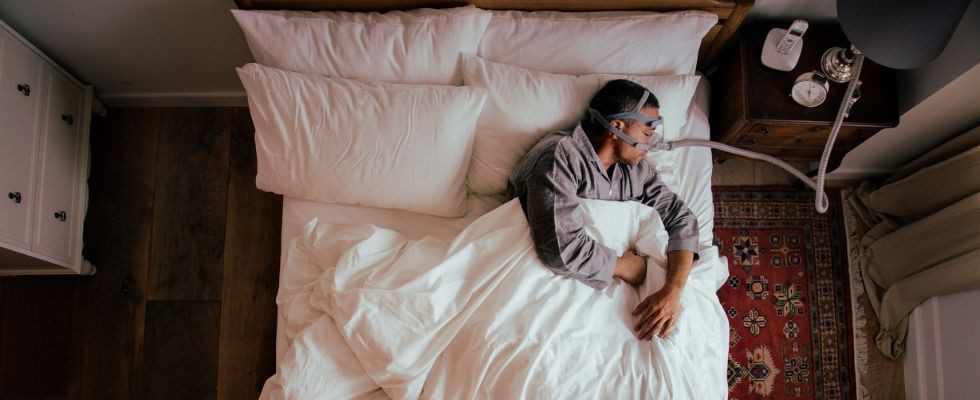
In today’s digital-first world where prioritizing wellness is becoming easier through technology, there is a condition that can be difficult to treat despite its vast impact on patients. A staggering 1 billion people worldwide are living with obstructive sleep apnea (OSA), and 85% of OSA patients go undiagnosed. Not only does OSA lead to disruptive sleep, but it is linked to comorbidities such as hypertension, obesity, diabetes and asthma, among others.
The need for treatments that address OSA symptoms and these other conditions has created a complex challenge for the sleep and respiratory industry. However, advancements in technology and therapy are setting the foundation for new patient opportunities. These innovations are empowering the industry to adopt a holistic approach to OSA care, which is essential for providing more personalized treatment, reducing healthcare costs and enhancing overall patient health.
Sparking Innovative Change
In recent years, there has been much focus on driving consumer technology advancements in OSA care. In 2024, the U.S. Food and Drug Association (FDA) cleared Apple’s OSA detection feature, available through a software upgrade for its various watch models. The feature is embedded within the Health app and tracks the user’s breathing while asleep. If frequent elevated breathing disturbances are detected over a 30-day period, users are given instructions on how to discuss the possibility of sleep apnea with their care provider. Samsung also received clearance for a sleep apnea feature for its Galaxy Watch series that launched at the end of 2024. It is encouraging that OSA is capturing the attention of major consumer tech companies, and that they are developing software that is readily available to users and can support positive patient outcomes. Looking ahead, medical device providers must keep pace with technologies from popular consumer tech companies to provide solutions that enable more rapid diagnosis and treatment of OSA.
The Impact of GLP-1s
Another powerful driver of OSA awareness is coming from an unexpected source: GLP-1 weight loss drugs. One of the questions I am often asked is how GLP-1 weight loss drugs will affect our industry. If left untreated, OSA increases the risk of stroke, heart attack and other serious health problems. It is time to stop treating each of these issues in silos and focus clinical care on improving the patient’s overall health.
There has been significant attention surrounding GLP-1 medications, but what may be getting undervalued is how these treatment options could lead to more patients engaging with their health care providers. As GLP-1 drug development progresses, clinicians and specialists must consider recommending them as part of a holistic approach to OSA treatment that encourages patients to pursue weight loss as part of their care plan.
Focusing on patients’ health more broadly can reduce the effects of OSA and help make CPAP therapy more effective. While GLP-1 drugs can lead to weight loss, they do not eliminate OSA in all patients. Instead, these drugs should be seen as complementary to CPAP therapy because they can make CPAP more comfortable for patients. A recent Eli Lilly drug trial showed that their GLP-1 drug may be more effective when combined with CPAP treatment when compared to just the drug alone. As the healthcare industry advances GLP-1 treatments, we can enhance patients' overall health and effectively address OSA and other comorbidities, paving the way for improved outcomes in managing weight-related challenges at a population level.
Caring For the Whole Patient
To be an effective partner in a patient’s weight loss journey, it’s crucial to think through their holistic care plan. In addition to highlighting the importance of testing, monitoring and a healthy lifestyle, clinicians can also explain the positive impact of CPAP therapy management and proper mask selection. Since sleeping with a mask may not feel natural for most patients, it’s important that patients have access to resources and ongoing support to remain educated on proper mask use. This can ensure better compliance with treatment, a key component in patients effectively managing their condition and achieving better health outcomes.
At recent industry conferences and meetings, I've heard directly from clinicians expressing a strong desire for more patient treatment options. Many of these conversations focus on identifying opportunities that will deliver even more value through multimodality solutions. This includes expanding access to remote patient monitoring tools that help keep patients healthier at home. With a better line of sight into patients’ progress with their care plan at home, clinicians can identify any challenges or health concerns earlier and make more timely interventions.
The effectiveness of a holistic approach to treating OSA relies on collaboration between clinicians and health tech manufacturers who can provide impactful solutions and services. Clinicians are eager for partners who can provide solutions to deliver high-quality care across multiple settings that can lead to improved patient outcomes. Strong collaboration between technology partners, patients, and care providers can provide a more connected patient experience and a healthier lifestyle, ultimately improving OSA and other related conditions.
The Future of Patient-Focused OSA Care
Given the link between OSA and other severe health conditions, along with a significant number of undiagnosed patients, it’s more important than ever to adopt a holistic approach to patient care. As the demand for quality OSA care grows, we must explore innovations to help patients safely maintain a healthier lifestyle. By adopting this patient-centric approach to OSA care, we can establish a foundation for lasting positive health outcomes, which can reduce health care costs and enhance the care experience for patients and health care providers.
